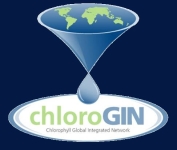In Situ Data Sources
World Ocean Database (WOD)
The WODselect retrieval system allows a user to search World Ocean Database 2009 and new data added since its release using a user-specified search criteria. A distribution map and cast count of these search criteria will give the user the option to have the data extracted and placed on the NODC FTP site in the WOD09 native and ".csv" data format (more information about downloading and reading the data files).
Atlantic Zone Monitoring Programme (AZMP)
Biological, chemical and physical information on the northwestern Atlantic Ocean gathered through the Atlantic Zone Monitoring Program. AZMP provides an ever-expanding perspective on seasonal, annual and longer-term changes in ocean conditions including sea levels, climate and weather.
Biological and Chemical (BioChem)
A repository for biological and chemical marine environmental sample measurements. Scientific Research Missions originating from the various DFO Research Institutions are the primary sources of information in the holdings. To access the database you are required to register for a username and password.
NASA SeaBASS
SeaBASS was designed to provide a user-friendly, searchable database of in situ bio-optical measurements to NASA Ocean Color Science Team members and to other interested individuals (members of other ocean color instrument teams, voluntary data contributors, etc.) for advanced algorithm development and data product validation purposes. In addition, SeaBASS contains a variety of data collected using different methods (e.g., subsurface and above-surface reflectance, high performance liquid chromatography, and fluorometric chl a), which are useful for measurement protocol evaluation purposes (e.g., Mueller and Austin 1995, Hooker et al. 1999, and Fargion and Mueller 2000).
For example, currently http://seabass.gsfc.nasa.gov/seabasscgi/archive_index.cgi/USF/HU includes the following data from Tampa Bay and West Florida Shelf:
- tb0408 (Tampa Bay; April 2008; parameters: ap, ad, ag, Rrs, Chl)
- Glider (West Florida Shelf; Feb.-Sept. 2009; ap, ad, ag, Chl)
- ng0508 (West Florida Shelf; May 2008; ap, ad, ag, Chl)
- Big_Bend (West Florida Shelf; March-September 2010; ap, ad, ag, Chl).
Additional data that were submitted in December, but are still undergoing QA/QC at NASA and do not appear in the database yet include:
- Glider (West Florida Shelf; Oct. 2009 - Nov. 2011; ap, ad, ag, Chl)
- Tampa_Bay (Tampa Bay; May 2010; ap, ad, ag, Chl)
- SWFL (West Florida Shelf; April 2010; ap, ad, ag, Chl)
- GOM_Oil_Spill (West Florida Shelf; May-Sept. 2010; ap, ad, ag, Chl).
Carbon Retention In A Colored Ocean Project (CARIACO)
Over the past twelve years, the Ocean Time Series project called CARIACO (CArbon Retention In A Colored Ocean) has studied the relationship between surface primary production, physical forcing variables like the wind, and the settling flux of particulate carbon in the Cariaco Basin. This depression, located on the continental shelf of Venezuela (Map), shows marked seasonal and interannual variation in hydrographic properties and primary production (carbon fixation rates by photosynthesis of planktonic algae).
The Cariaco data is also stored in our servers at: http://cariaco.cbm.usb.ve/datos
The on-line tools for extracting chla data form MODIS maps are located at: http://ood.cbm.usb.ve/aplicaciones/ (also SST data). You can extract the data from a single point, a transect, or a time series. You can also construct average images from a time frame, or estimate the size of the upwelling plume.
JODC Data On-line Service System (J-DOSS)
JODC has archived the oceanographic data and related information (Temperature, Current, Depth, Biology, Marine information) obtained by various oceanographic research institutes in and outside Japan, and has served the corrected data and information for users' activities.
Other In Situ data sources
- BATS (Bermuda Atlantic Time-series)
- CMEP (Centre for Marine Environmental Prediction)
- HOT (Hawaii Ocean Time-series) Station ALOHA
- MOSEAN (Multi-disciplinary Ocean Sensors for Environmental Analyses and Networks)
- OASIS:Ocean Acquisition System for Interdisciplinary Science (MBARI)
- LOBO(Land/Ocean Biogeochemical Observatory)MBARI
- Tropical Atmosphere Ocean (TAO) project
- WHOTS (WHOI HOT Station)
- Bóias Ondógrafo
- Monitoring of the Nazare Canyon (MONICAN)
- SIMPATICO
- Subduction Experiment by Upper Ocean processes group
- Cariaco Time-series project
- NTAS (Northwest Tropical Atlantic Station)
- PIRATA - (Pilot Research Moored Array in The Tropical Atlantic)
- Stratus Project
- Maizuru Bay coastal observation
- Research moored array for African-asian-australian Monsoon Analysis and prediction (RAMA)
- SATCORE Time-series along Indian coast
- Temperature Field Off Tohoku
- RAIA
- Irish Sea Coastal Observatory
